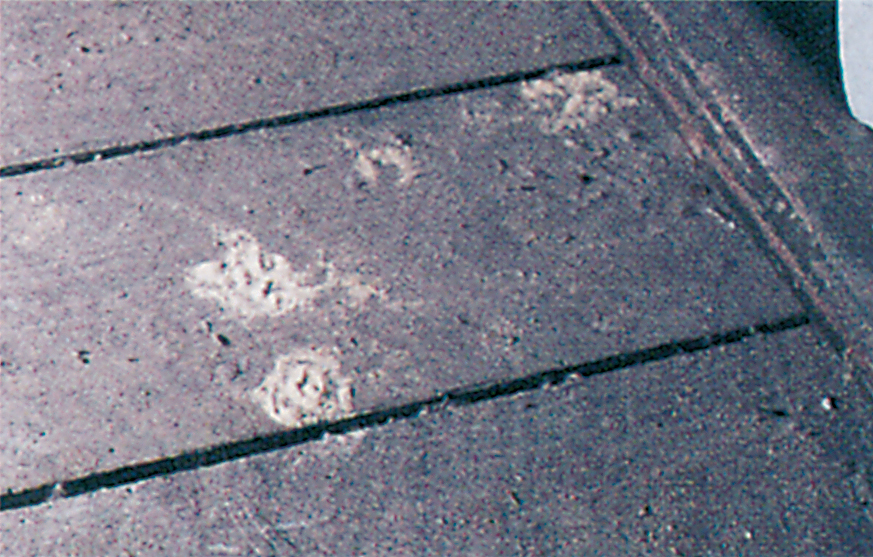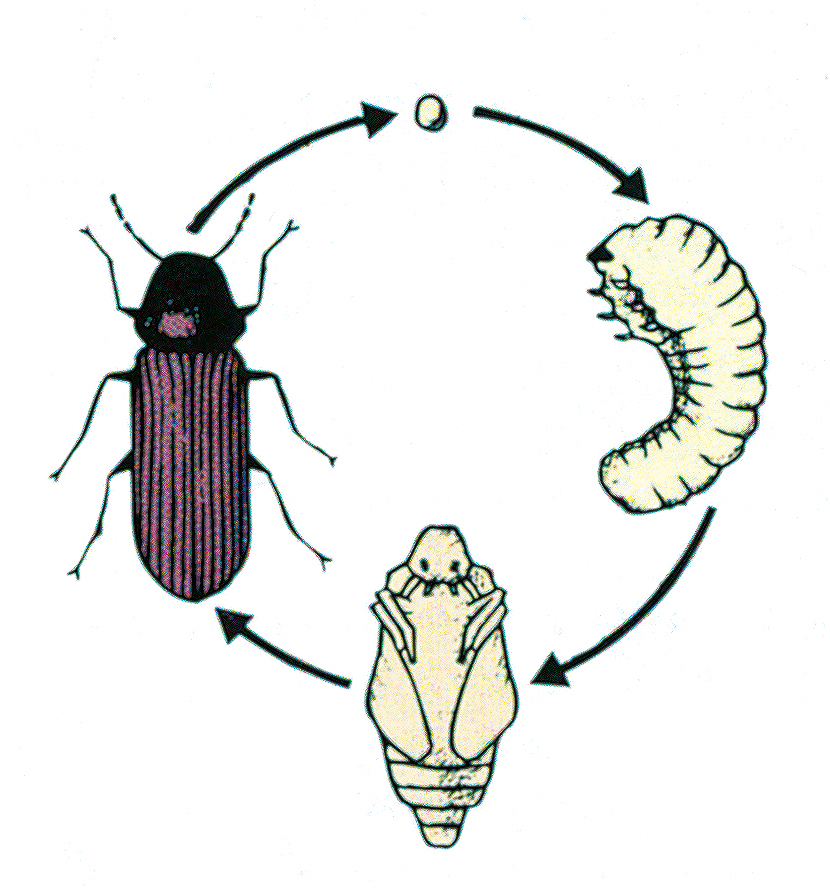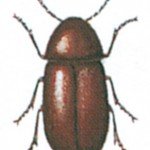Latin: Anobium punctatum

This is a very common pest of timber and furniture and is or has been present in most old houses. The adult beetles emerge during the summer months by gnawing their way out from the infected timber through circular exit-holes. It is at this time that wood dust falls out of the timber. The beetles, which only live a couple of weeks, can fly and are often confused with small flies. Shortly after emergence they mate and the female starts to lay eggs.

The eggs are never deposited on smooth surfaces but in crevices, on the end grain, or on unplaned timber, and very often in old exit-holes. The eggs hatch after 3-4 weeks, and the tiny larvae start immediately to gnaw into the timber.
They leave the un- digested parts of the timber in the tunnels in the form of small, oblong balls of faeces. As the larvae grow the diameter of the tunnel gradually increases. The larvae do not leave the timber and cannot therefore wander from one piece of furniture to another. Their development takes 2, 3 or more years, depending upon the temperature, the humidity and the type of timber.

The most favourable temperature for the development of the larvae is 22-23° C, but they can live at lower temperatures, and even outdoors in Europe. The water content of the timber is important for the well-being of the larvae. The damper it is the better, provided the timber is not soaking wet over a long period.
Serious infestations by this beetle often occur, therefore, in kitchens, cellars, outhouses and stables which are sometimes rather damp. This species does not thrive if the air humidity is constantly fewer than 50 % so it will not survive in the dry climate of a modern centrally heated building. It prefers soft- woods but can live in practically all types of timber. It does not, however, attack sound heartwood.
Bookworms are beetle larvae that live in paper (p. 107). The fact that these larvae can develop in all these materials, and even in pure cellulose, is due to the presence in the gut wall of special yeast cells which break down the cellulose to digestible sugars and provide the larvae with the necessary supplement of vitamins and nitrogen.





